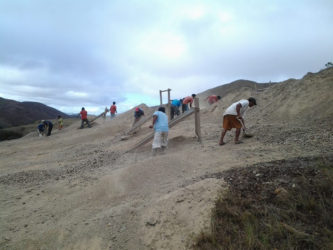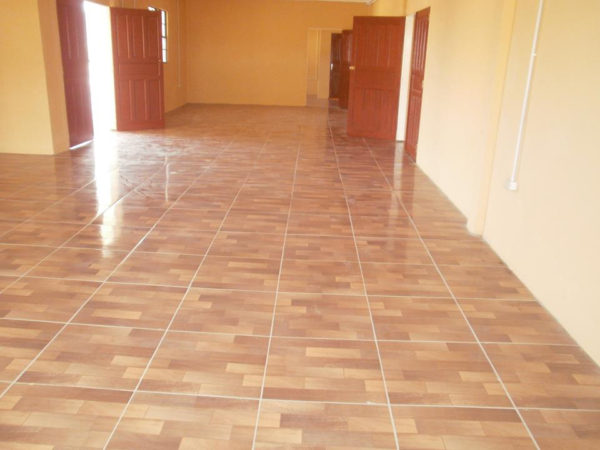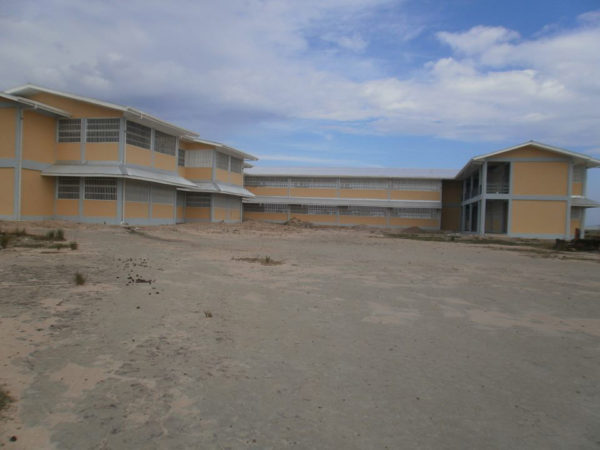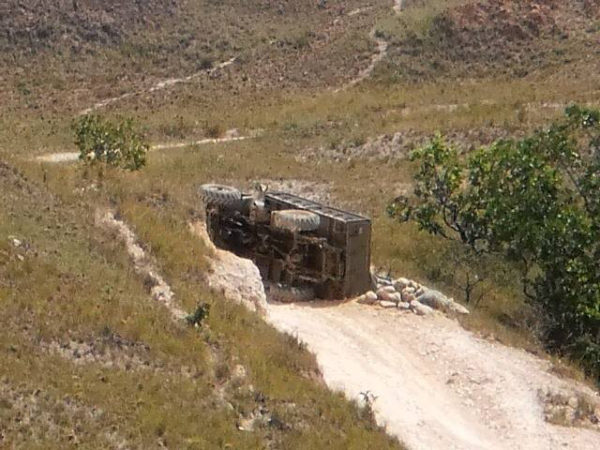The construction company that built the Kato Secondary School says it is being wrongfully blamed for the school’s incompletion and alleged defects, as it met the required contractual obligations for the original sums provided.
“We were contracted to build the school for $728,165,485, to be completed in two years and we built the school as specified, for the said sum within the timeframe given,” an official of Kares Engineering told Stabroek News in an interview.

Minister of State Joseph Harmon last month told the press that an evaluation done by the Ministry of Public Infrastructure found that the building was not safe enough to be occupied by children.
“Remedial work has to be done and the Kato Secondary School, that school is not being occupied as yet and the contractor who was given the contract has been called in and they are basically dealing with the Ministry of Public Infrastructure in relation to that contract and several other contracts that particular contractor had with the Ministry of Education,” Harmon said.
The Kato school complex was built as a precondition for the investment of almost €1.8 million in European Union (EU) funding, for the proposed Kato Hydropower Project. The school was envisaged to be the main consumer of power supplied by the plant.
Kares Engineering had won the contract for the construction of the school with a bid of $691,972,139 back in 2013 and a timeframe of two years, from April 21, 2013 was given to have the construction completed.
The official of the contracting firm, who preferred to remain anonymous, complained that many persons believe Kares Engineering was paid $1 billion to build the school and that currently there are many defects that government now has to complete.
“I don’t know where $1 billion came from we started at $728 million and we finished at $728 million. We didn’t go in for a variation. We didn’t leave school unfinished. I just don’t know what happened and where all of this blame on the contracting company came from,” the official said.
This newspaper understands that in addition to remedial construction work, furnishing, lighting, fencing, and security of the school still have to be completed and these have the delayed the opening. These works were not part of the original building contract. A prebid meeting was held on Wednesday, at the Ministry of Education, for the supply and installation of a photovoltaic system for the school.
Concrete
Minister of Communi-ties Ronald Bulkan and Minister Public Infrastructure David Patterson had both said that the school’s opening in January this year was delayed because of major structural defects.
Patterson had told the National Assembly that the concrete laid by the contractor had proven to be sound in only 10% of the tests conducted by an independent consultant. “Sixty per cent of tests done on the concrete failed while a further 30% were borderline. Only 10% proved sound,” Patterson had said.
Bulkan said that the flaws went beyond the construction of the complex to its design.
This was rejected by the company official who informed that a detailed technical audit and analysis was done on the school, after which Kares was asked to respond to the claims.
“I think the mix-up came because the ministries were referring to the original contract requirements and not the adjustments made. The first contract required PSI [Pounds per Square Inch] 3500 for all concrete works. It was also stated that we used white sand and ¾ aggregate… When they tested they were doing so for PSI 3500 but that had been reduced before construction because we had to use local materials. When they did the other Schmidt hammer tests, using the [PSI] 3000 calculations, we passed 22 out of 24…,” the official said.
“We had to source sand from the creek because it is practically impossible to take white sand and ¾ aggregate, which would give the 3500 PSI strength, from Region 4 or 10 to Kato. Impossible and not to mention expensive as hell. The cost of taking one truck load [25 Cubic Yards (CY)] of sand from Timehri to Karasabai is $275,000, not Kato… Do the math when 5,400 CY of sand was needed. Listen, for the stone we had to get it from the mountains and it was laterite. We had to burn off the vegetation, break up the laterite with pick axe, wash the stone, sift it and then what is left that you use. This is the Pakaraimas we were dealing with. I’m talking about mountains, valleys and creeks… Five trucks turned over, one engineer broke his feet and such,” he added.
The official also blasted accusations that his company employed the people of Kato and paid them paltry wages.
Said the Kares official, “The technical audit report indicated that a daily rate of $2,500 was paid to workers… This is grossly inaccurate since you cannot get a skilled worker to work for $2,500 per day in Georgetown, much more in Kato. The workers were paid $9,000 per day plus overtime…”
He said that too many times contractors are blamed for defective works when consultants are also being paid to oversee those works and should also take some of the blame. “In Guyana we always blame the contractors, but shouldn’t it be in co with the consultant? Contractors work under the guidance, supervision and protection of the consultant. Speaking for this project, we would not have moved from one stage to the next if we were not given the go ahead by the consultant. In North American countries …consultants have to take the blame. I mean, if you approved everything for a project why then blame me?” he questioned.
He added, “If the consultant says no that pile should not go there, move it here, the contractor has to adhere. You can’t say no. So now, if a structure has defects and collapses who will we blame?”
Kares Engineering constructed several schools and the officials said it has never had the criticisms received on the Kato project. The schools it has built include Leonora Secondary, Diamond Primary, LBI Secondary, Zeeburg Secondary, Parika/Salem Secondary and others. It is currently constructing the new Smythe Street Nursery School.
“We had to subject ourselves to all sorts of things you won’t believe because of this project… All we have done is completed, what was put in our agreement. Ask the people of Kato and the surrounding communities, from the Toshaos right down, they were the ones who sourced the materials because we don’t know that terrain, if they are not satisfied then you have a story,” the official said.








